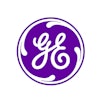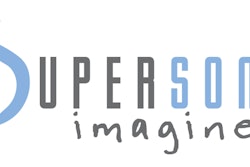Differentiating benign from malignant thyroid nodules can be difficult, but advanced ultrasound applications such as elastography, computer-assisted analysis, and 3D ultrasound may make that challenge a little easier, according to a trio of presentations at the 2009 RSNA meeting in Chicago.
A French research team found that an elastography technique was able to improve sensitivity for detecting malignant nodules, while a Korean research group found that 3D ultrasound produced superior characterization of thyroid nodules. Another Korean team found that computer-assisted analysis of morphological and calcification features would add value in differentiating calcified nodules.
Elastography
In the quest for improved diagnostic performance in differentiating thyroid nodules, the French team evaluated the use of an elastography technique in a prospective study with 93 patients. Of these patients, 61 had solitary nodules and 32 had multiple nodules, said presenter Dr. Charles Oliver of Hôpital de la Timone in Marseille, France.
Prior to surgery and fine-needle aspiration (FNA) biopsy, all patients received an ultrasound study and the elastography using a shear-wave elastography (SWE) technique (SuperSonic Imagine, Aix-en-Provence, France). Shear-wave elastography automatically generates and analyzes transient shear waves to calculate an elasticity index that's a measure of tissue stiffness using a scale based on kilopascals (kPa), a unit of pressure.
The cutoff elasticity index was fixed at 69 kPa to yield a positive predictive value of 90%, Oliver said. Of the 144 nodules included in the study, 29 were malignant (15 from the group of solitary nodules and 14 from the group of multiple nodules).
The researchers compared two methods; the first consisted of a score calculated using conventional ultrasound parameters such as absence of a halo, central vascularization, hypoechogenicity, and microcalcifications. The elasticity index was added to these parameters to create a second score.
The method based on conventional ultrasound parameters yielded sensitivity of 44% and specificity of 99% for malignant nodules. The addition of the elasticity index, however, boosted sensitivity to 74% with a specificity of 98%.
In other findings, the elastography technique generated a mean elasticity index of 150 kPa in malignant nodules, compared with 36 kPa in benign nodules.
"Shear-wave elastography is an effective tool in the localized evaluation of thyroid nodules," Oliver said. "It can be used in multiple as well as solitary nodules, and also [with caution] in nodules with microcalcifications. It might be especially useful in association with ultrasound for the selection of nodules for FNA, and it might also significantly reduce the number of FNA."
In the group's next research step evaluating the elastography technique, a multicenter study will seek to determine its optimal usage in the management of thyroid nodules, Oliver concluded.
3D ultrasound
While ultrasound yields the best diagnostic accuracy for evaluating thyroid nodules, 3D ultrasound can help overcome some of the modality's shortcomings, according to a research team from Seoul National University Bundang Hospital in South Korea.
"Three-dimensional review of thyroid nodules can improve diagnostic performance and interobserver agreement," said presenter Dr. Mijung Jang.
3D ultrasound can demonstrate legion margin and topography, invaluable information for differentiating nodules. As a result, the research team sought to prospectively compare static 2D with 3D ultrasound images in the diagnostic performance of radiologists in differentiating benign from malignant thyroid nodules. The researchers also sought to compare interobserver and intraobserver agreement with both ultrasound methods.
The two-week study involved 82 patients and 91 nodules. Of the 91 nodules, FNA results revealed 15 cancers, 13 indeterminate lesions, and 63 benign lesions. Ultrasound was performed on a scanner from GE Healthcare (Chalfont St. Giles, U.K.), with 3D data manipulation and postprocessing performed by GE's ViewPoint workstation.
Three radiologists independently reviewed the 2D ultrasound images and stored 3D ultrasound data, and they noted a level of suspicion concerning probability of malignancy. Each lesion was described using the Korean Thyroid Association guidelines, including internal content, margin, shape, calcification, and echogenicity, Jang said.
Although the differences did not reach statistical significance (p > 0.05), all three readers realized higher sensitivity and specificity performance using 3D.
|
Receiver operator characteristics (ROC) analysis was performed. The area under the curve was 0.834 for 2D and 0.924 for 3D for Reader 1, 0.776 for 2D and 0.889 for 3D for Reader 2, and 0.894 for 2D and 0.931 for 3D for Reader 3.
In other findings, interobserver agreement was better with 3D ultrasound (κ = 0.4887) than with 2D ultrasound images (κ = 0.1526). The researchers also found slight to moderate intraobserver variability for nodule description and assessment between both methods.
"The performance of the radiologist ... with respect to the characterization of thyroid nodules and interobserver agreement with 3D sonographic data was superior to that of 2D sonographic images," she said.
Computer-assisted analysis
In research targeting calcified thyroid nodules, a study team from Hanyang University Hospital in Seoul found that computer-assisted analysis of nodule morphological and calcification features may help differentiate malignant and benign lesions.
While separate computer-aided analysis of morphology and calcification turned in similar results during the retrospective study, analysis that examined both features together proved to be superior to either technique alone.
In their study, the Hanyang researchers sought to utilize computer-assisted analysis to quantify the ultrasound characteristics of calcified thyroid nodules. They also wanted to determine the useful computerized ultrasound features of calcified nodules in differentiating between malignant and benign lesions.
After an initial review of Hanyang patients between 2004 and 2008 who had received thyroid surgery, 147 nodules with calcifications were selected from 125 patients (41 men, 84 women; mean age, 51 years), according to presenter Dr. Woo Jung Choi.
Forty-eight nodules were excluded due to poor image quality, lack of histological correlation, or having a mass that was larger than the field-of-view, she said. As a result, 99 (21 benign and 78 malignant) nodules were included in the final study.
The majority of calcifications were microcalcifications, followed by macrocalcifications, rim calcifications, and mixed calcifications, she said. Visual nodule boundaries were outlined manually using the ImageJ open-source image analysis software from the U.S. National Institutes of Health (NIH). Computerized analysis was then performed, which extracted the nodules' morphology (shape and texture) and calcification patterns (number, size, distance, and intensity).
These features were then compared between malignant and benign nodules, and the highest-performing features were determined via linear discriminant analysis. Using the best set of parameters, the researchers evaluated the diagnostic performance of computer-assisted analysis in differentiating between malignant and benign nodules.
In ROC analysis, computer-aided analysis of calcification features yielded an area under the curve (AUC) of 0.79, while analysis of morphological features yielded 0.81 AUC. This increased to 0.86 AUC when calcification and morphology information were evaluated together.
"For the differentiation of calcified thyroid nodules, the best discriminant set of computer-assisted analysis features were combined calcification and morphology features," Choi said.
By Erik L. Ridley
AuntMinnie.com staff writer
February 5, 2010
Related Reading
Risk of thyroid cancer increased in childhood cancer survivors, October 28, 2009
ARRS study: US can help avoid thyroid biopsy, April 23, 2009
Ultrasound elastography shows potential in thyroid nodules, February 11, 2009
Screening for thyroid cancer worthwhile in some childhood cancer survivors, December 29, 2008
Ultrasound's accuracy in differentiating thyroid nodules depends on nodule size, June 11, 2008
Copyright © 2010 AuntMinnie.com




















